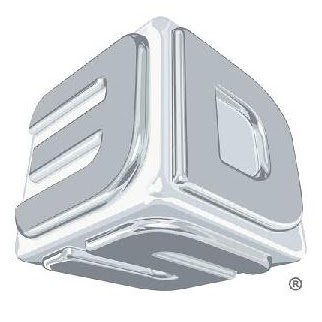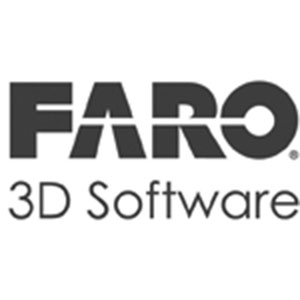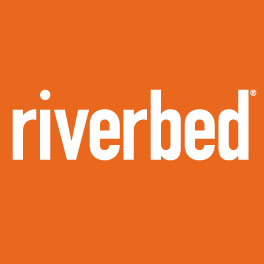Category: Stock Research
IPG Photonics: Shining a Light on Factory Automation
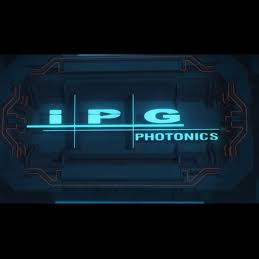 With trailing twelve month revenue of $1.25 billion, and a recent market cap of $8.7 billion, IPG Photonics (NASDAQ: IPGP), based in Oxford, Massachusetts, is a leading developer of fiber lasers, fiber amplifiers, and diode lasers. The company’s products are utilized primarily in the automotive, industrial machinery, consumer product, and medical industries.
With trailing twelve month revenue of $1.25 billion, and a recent market cap of $8.7 billion, IPG Photonics (NASDAQ: IPGP), based in Oxford, Massachusetts, is a leading developer of fiber lasers, fiber amplifiers, and diode lasers. The company’s products are utilized primarily in the automotive, industrial machinery, consumer product, and medical industries.
IPG Photonics was founded in Russia in 1990 by then 52 year-old physicist Dr. Valentin P. Gapontsev, Ph.D. Born at the outset of World War II, Dr. Gapontsev earned his Ph.D. in laser material science from the Moscow Institute of Physics & Technology in 1972. In addition to his numerous awards in science and technology, the Russian-born Gapontsev is known as one of the fathers of fiber lasers, stemming from his original work in laser material science. Today, the 81 year-old founder remains IPG’s Chairman and CEO, and through direct and indirect share ownership, controls the overwhelming majority of the company’s common stock. Originally, IPG produced custom glass and crystal lasers, wireless temperature meters, and laser components. The company subsequently shifted focus to high-power fiber lasers and amplifiers in 1992.
IPG debuted on the NASDAQ on December 13th, 2006 in a 10.4 million common stock offering, with 7.6 million coming from the company, and 2.8 million from shareholders. Merrill Lynch and Lehman Brothers were joint book-running managers for the offering, assisted by Needham & Company, Thomas Weisel Partners, and Jeffries.
IPG pursues a strategy of vertical integration, purchasing only the raw material inputs utilized for its products. Thus, it designs and manufactures nearly every key component used in its finished products, ranging from semiconductor diodes to optical fiber preforms, to finished fiber lasers, and amplifiers. The company also creates complementary products utilized with its lasers, such as optical delivery cables, fiber couplers, beam switches, optical processing heads, and chillers. Vertical integration enables the company to reduce manufacturing costs, improve quality control, as well as ensure product integration, and the protection of its intellectual property. IPG has also accumulated over 350 patents, with more than 80 more pending.
Automotive, broadly defined, is IPG’s largest vertical market, contributing roughly 20 percent of revenue. The company’s lasers are utilized for a variety of cutting and welding applications, including body welding across all types of production vehicles. In Q1 of this year, IPG received its first large order for Adjustable Mode Beam (ABM) lasers, which are utilized for electric vehicle battery welding. The new ABM lasers allow for “spatterless” welding, greater reliability, and higher wall plug efficiency. Another key application for electric vehicle batteries come from IPG’s pulsed laser, which is utilized for foil cutting.
With its cutting edge, unique proprietary technology, focus on vertical integration, and global reach, IPG is helping to illuminate the way to automated industrial production.
3D Systems: Can New Management Turn the Tide?
On April 4, 2016, following a six month search, the board of directors of 3D Systems (3DS hereafter) appointed Vyomesh Joshi, aka VJ, as president and CEO. The appointment occurred as the venerable manufacturer of 3D printers attempts to regain its footing, following an extended period of questionable acquisitions, loss of market focus, and damaged credibility among investors.
Joshi, aged 62, had been president of the Imaging and Printing Group of Hewlett Packard for 11 years, beginning in February 2001, and left as EVP in March of 2012, bringing to a close a 31-year career at HP, after HP, in one of its many reorganizations in the last number of years, combined printers and personal computers into the same business unit. While leading the $26 billion H-P printer business, Joshi doubled the division’s operating profit. Joshi appears to have been lured out of near-retirement with a stock and options package worth a potential $27 million, based in large part on 3DS’ future stock performance. Joshi is currently on the board of directors of both Wipro (NYSE: WIT) and Harris Corporation (NYSE: HRS). He received his bachelor’s degree in engineering from L.D. College in Ahmedabad, India, and a master’s degree in electrical engineering from the Ohio State University.
Joshi replaces 3D Systems’ highly flamboyant and acquisitive CEO Avi Reichental. Over the last few years 3DS has endured numerous set-backs, including an over-emphasis on acquisitions for growth, missteps in the consumer printer market, distribution channel challenges, product quality issues, a delay in the filing of its 2015 10-K, along with a lack of investor confidence, which has resulted in a more than 80 percent contraction in its share price since peaking at $97.25 in late 2013.
Since taking the helm at 3DS Joshi has been somewhat coy regarding future plans, but has noted the company’s lack of operational efficiency, and the challenge to build a sustainable corporate culture from among the company’s employee base of roughly 2,500, many of whom have come to 3DS via acquisition. In mid-June 3DS announced it had hired John N. McMullen, age 58, as VP Finance and CFO, replacing David Styka. McMullen had most recently been at Eastman Kodak, where he took the helm as CFO beginning in June of 2014. Prior to that, McMullen, was SVP Finance and Corporate Treasurer, as well as CFO of HP’s Imaging and Printing Group, where he worked alongside 3DS’ new CEO, Joshi.
The new management team will have much to confront, including helping customers sift through the reality versus the hype of 3D printing, along with the need to create printers with faster speeds and more precision to produce parts that can be used in volume production, in addition to prototypes utilized for visualization and marketing purposes. 3DS has, along with many of its competitors, from time to time over the last three years, produced printers with varying levels of product quality.
With regard to Joshi’s future strategy, we can gain a glimpse into his thinking. In an address before the Net Impact Conference at Stanford in November of 2005, Joshi spoke of the elements required to create a sustainable business. These include: identifying holes in the market, developing appropriate price models, establishing business partnerships, fostering trust and respect among employees, and providing leadership that puts business first, people second, and the egos of managers third.
Brooks Automation: Poised for Recovery?
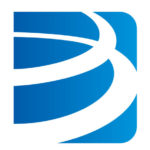 Is Brooks Automation poised to Participate in Industry Upswing?
Is Brooks Automation poised to Participate in Industry Upswing?
With trailing 12 month sales of $546 million, and a market cap of $680 million, Brooks Automation (NASDAQ: BRKS), based in Chelmsford Massachusetts, is a leading provider of automation equipment and services to the semiconductor, LED, and consumer electronics industries, which collectively account for 80 percent of sales. Life sciences accounts for the remainder, and is comprised of biological sample storage systems, consumables, and services, which leverage Brooks’ core competence in cryogenic and automated manufacturing equipment.
The cyclical semiconductor business remains Brooks’ largest and most profitable segment, where it serves over 200 OEM customers, including Applied Materials (NASDAQ: AMAT), Tokyo Electron (OTC: TOELY), Lam Research (NASDAQ: LRCX), and KLA-Tencor (NASDAQ: KLAC), who are in the midst of merger discussions. Brooks also conducts business directly with many of the leading semiconductor device makers, including Samsung, Toshiba, Intel (NASDAQ: INTC), Taiwan Semiconductor Manufacturing Company (NYSE: TSMC), and Micron (NASDAQ: MU). Over the last several months, Brooks has begun to see growing demand for its vacuum robots, and contamination and control solutions, which comprise about 40 percent of semi cap equipment sales.
Four years ago Brooks embarked on a strategy to divest non-core businesses, expand in the semiconductor equipment business, and diversify into life sciences, primarily through acquisition. Brooks Life Sciences parlays the company’s core competencies in cryogenics and automation into the cold storage, retrieval, and tagging of biological samples. Brooks has acquired five companies in the last four years, and the division now claims over 100 customers, including the top 20 drug and biotech companies.
The all-cash $128 million acquisition of privately-held, BioStorage Technologies, an Indiana-based provider of sample management services, was completed late last year. The business is on track to generate over $40 million revenue, and in doing so, has enabled the life sciences segment to achieve a $100 million annualized run rate, with services and consumables accounting for about 60 percent of the total. Though not yet profitable, Brooks Automation narrowed the operating loss in the segment to $2 million in the March 31 quarter, and with a recent restructuring, targets profitability by the end of the September quarter.
Three key swing factors will determine Brooks Automation’s fate over the coming year, specifically whether it:
- participates in the steady recovery of spending in the semiconductor industry, fueled by a resurgence in demand for front-end systems as OEMs and semiconductor customers shift their emphasis to 10 nanometer process technologies.
- achieves profitability in the Life Science segment through greater efficiency, execution, and a more predictable mix of consumables and services for cold storage samples.
- achieves operating margin expansion more broadly, as it concludes a number of cost reduction initiatives, and begins, at long last, to focus on organic, rather than acquisition-driven growth.
As Brooks confronts the above-mentioned challenges, the company provides investors with a degree of downside protection, given its historically strong free cash flow generation, a good balance sheet, with $68 million in cash, or $1.00 per share, no debt, a tangible book value of $3.61 per share, and a compelling valuation vis-à-vis its SMID cap peers in the semiconductor capital equipment business. The company also investors with a dividend, whose current yield is four percent.
FARO Technologies: Measuring for Success
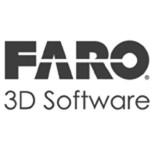 With trailing 12 month sales of $318 million, a market cap of $473 million, $150 million in cash and no debt, FARO Technologies is a leading provider of three-dimensional (3D) measurement and imaging devices. The Lake Mary Florida company has over 200 patents, and several hundred more pending on a global basis. The company’s patents will expire on a rolling basis between now and 2024.
With trailing 12 month sales of $318 million, a market cap of $473 million, $150 million in cash and no debt, FARO Technologies is a leading provider of three-dimensional (3D) measurement and imaging devices. The Lake Mary Florida company has over 200 patents, and several hundred more pending on a global basis. The company’s patents will expire on a rolling basis between now and 2024.
With roughly 15,000 customers and 30,000 product installations across the globe, FARO serves a prestigious customer base, which includes the leading OEM manufacturers in the automotive and aerospace markets, such as GM, Daimler, BMW, Volkswagen/Audi, Jaguar, Nissan, Boeing, the US Military, and Airbus. Importantly, FARO maintains a low level of customer concentration, and much of its business comes from second and third tier suppliers to OEMs in its key markets. For all of 2014, the company’s top ten customers accounted for less than five percent of sales. In the third quarter of 2015, the top five customers accounted for 6.2 percent of sales. In a typical quarter about 70 percent of sales come from the company’s installed base, while new customers contribute the remainder.
FARO Technologies is best known for its Arm product, which provides precise 3D measurement of mechanical objects, and has seen strong traction across most industrial verticals. FARO’s Focus laser scanner product, believed to be the company’s second strongest selling product, has achieved some success in industrial applications, but has been facing competitive pricing pressure more recently, particularly in the price sensitive architectural engineering and construction (AEC) vertical market, the laser scanner’s largest vertical. The company also offers the FARO Laser Tracker, a portable coordinate measuring machine for large volume 3D measurement.
FARO Technologies faces competition from a number of global competitors, including Hexagon AB of Norway, Trimble Navigation, Topcon, as well as other niche providers, such as Steinbichler of Germany. Current foreign exchange rate dynamics have emboldened FARO’s European competitors to attempt to gain market share, thus exploiting the relative strength of the US dollar.
We remain optimistic regarding FARO Technologies’ longer term growth prospects, despite currency headwinds and macro conditions that began to emerge in the first quarter of 2015. We are impressed by FARO’s solid technology and strong customer base, though 2015 has proven to be a transition year in which the company faced numerous market and foreign exchange challenges. During this period turnover in the company’s executive ranks has been significant, particularly in light of the recent resignation of the company’s long-standing and hard-charging CEO and president Jay Freeland.
That said, the company has announced an ambitious organizational and growth strategy under the leadership of interim CEO Dr. Simon Raab, who is also a company co-founder. Recently appointed CFO Laura Murphy brings significant operational experience to the company, with experience at Philips and Ford Motor Company. Despite its challenges, FARO retains an excellent balance sheet overall, with $150 million in cash, no debt, and re-purchased $23 million of its common stock in the fourth quarter, under a $41 million share repurchase authorization.
PetMed Express (NASDAQ: PETS): In Need of a House Call?
 PetMed’s most recent financial results for the quarter ended March 31 were essentially in line with our revenue estimate of $50 million, as sales grew by three percent over the prior year. The company’s average order size grew by five percent over the prior year to $81, as a result of customers increasing the dosages for their pets in advance of the flea and tick season. At the same time we noted that the company added 10,000 fewer customers than during the same quarter in the prior year. And despite recording a higher percentage of sales from higher margin prescription drugs, the company’s gross margin deteriorated by 200 basis points to 33.9, due to price competition in OTC medications, a category that still accounts for an estimated 40 percent of sales.
PetMed’s most recent financial results for the quarter ended March 31 were essentially in line with our revenue estimate of $50 million, as sales grew by three percent over the prior year. The company’s average order size grew by five percent over the prior year to $81, as a result of customers increasing the dosages for their pets in advance of the flea and tick season. At the same time we noted that the company added 10,000 fewer customers than during the same quarter in the prior year. And despite recording a higher percentage of sales from higher margin prescription drugs, the company’s gross margin deteriorated by 200 basis points to 33.9, due to price competition in OTC medications, a category that still accounts for an estimated 40 percent of sales.
PetMeds had recently been benefitting from a favorable trend away from OTC topical medications to prescription pills, which are easier to administer, and do not require the task of bathing a pet in an ointment that can wash off easily. In contrast to topicals, pills require a veterinarian’s prescription and are typically higher priced and carry better gross margins than OTC products. During the last fiscal year sales from prescription medication rose from 44 percent to 50 percent.
At the same time, OTC medications as a percentage of sales remained fairly constant, and until this most recent quarter, we surmise, margins had been holding up as well. However, the large number of brick and mortar and internet providers of OTC medications have evidently been cutting prices, and thus PetMeds’ margins were hurt. We do not see any reason why margins would rebound in the current or subsequent quarters.
Supplier Concentration
PetMeds offers over 3,000 skus for sale to its customers, however a “significant” percentage of sales come from just 100 skus. Moreover about 50 percent of PetMeds’ sales come from just four suppliers. At the same time, PetMeds is trying to increase its direct relationships with drug manufacturers, many of whom require PetMeds to purchase their products from distributors. These supplier dynamics are not new, yet they illustrate the challenge that PetMed faces in increasing gross margins.
The animal health business is becoming increasingly concentrated, as many of the world’s largest pharmaceutical companies are seeking to gain market share. These include Merck Animal Health, the Merial division of Sanofi, Elanco, the animal health division of Eli Lilly, which acquired Novartis Animal Health last year in the second largest acquisition in Lilly’s history. Other mega players include Zoetis, and Boehringer Ingelheim. While only a sub-set of PetMed Express’ competitors offer prescription as well as over the counter pet medications, still a large enough number do, including PetSmart, CostCo, Target, and Amazon.com. It is unlikely that PetMed will be able to develop a price or cost advantage, particularly given the clout of its supplier base.
Sales Growth Remains Elusive
Despite ongoing attempts to rekindle sales growth in the last few years, PetMeds continues to face strong competition from brick and mortar and other online sources of pet medication. Rising advertising costs throughout the industry have for whatever reason made PetMeds’ management gun-shy with respect to advertising investments to gain market share. Over the course of the last year management has reduced advertising expenses by seven percent, a decision which we believe has been detrimental to new customer growth. The company’s tight-fisted approach to advertising suggests that sales gains are likely to be minimal. We see no evidence that PetMeds is gaining market share during a period of solid consumer spending.
While the above concerns suggest that a house call very much remains in order, we also believe that the patient is by no means incapable of recovery, as PETS’ core competencies include online distribution, customer service, product knowledge, efficient inventory management, and a 2.5 million-plus pet owner customer base that have purchased at least one product in the last 24 months. We believe the company’s valuation on an EV/sales basis remains compelling at 1.2x our 2015 revenue estimate net of cash. At the same time, price competition continues to plague the company, a condition which will need to be monitored.
Au Revoir Riverbed
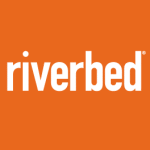 Yesterday morning Thoma Bravo, the Chicago-based private equity investor, in concert with its frequent partner, Teachers’ Private Capital, a department of the Ontario Teachers’ Pension Plan, announced its intent to acquire Riverbed Technology (NASDAQ: RVBD) in an all-cash deal that values RVBD at roughly $3.6 billion, or about three times projected 2015 revenue, net of RVBD’s net $43 million cash position, which includes an estimated $80 million for the sale of its cloud storage business to NetApp (NASDAQ: NTAP).
Yesterday morning Thoma Bravo, the Chicago-based private equity investor, in concert with its frequent partner, Teachers’ Private Capital, a department of the Ontario Teachers’ Pension Plan, announced its intent to acquire Riverbed Technology (NASDAQ: RVBD) in an all-cash deal that values RVBD at roughly $3.6 billion, or about three times projected 2015 revenue, net of RVBD’s net $43 million cash position, which includes an estimated $80 million for the sale of its cloud storage business to NetApp (NASDAQ: NTAP).
While we are disappointed to see Riverbed sell to a private equity investor, rather than a company in the software and appliance segment, we note the expertise that Thoma Bravo has developed in the business software and appliance space, which includes its recent tender offer for Detroit-based Compuware, a $2.5 billion transaction announced less than four months ago, as well as previous acquisitions of SonicWall (subsequently sold to Dell), Blue Coat Systems, and privately-held Crossbeam Solutions.
After pre-announcing a modest shortfall in revenue relative to company guidance in each of the last two quarters, Riverbed also announced that it would undertake a strategic review of its options to maximize shareholder value. That announcement was made against the backdrop of an increasingly activist shareholder, Elliot Management, which has held a near 10 percent stake in the company for more than a year. We perceive the deal to have a high probability of closing, given the all-cash nature of the transaction, its approval by Riverbed’s board, as well as Elliot Management.
Notwithstanding a rather short-lived shareholder value maximization process of less than two months, Riverbed has, in a sense, been for sale unofficially ever since Elliot Management made its first $19 per share offer, back in February. With the ability to execute its recently announced restructuring plan out of the limelight, Riverbed, under the aegis of Thoma Bravo, is well on its way to realizing its complete potential.
iRobot: Leading the Revolution in Consumer Robots
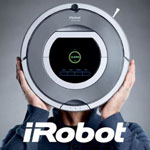 iRobot is the dominant provider of home vacuum robots, with an estimated market share exceeding 60 percent around the globe. Since the Roomba began shipping in 2002, iRobot has sold over nine million units, and the category continues to grow, as evidenced by the company’s 15 percent growth rate in consumer robots in the second quarter. The Roomba product line features six models, which range in price (at retail) from $300 to $700. The product features a range of cleaning capabilities, and is sold through a broad range of home retailers, including the most prominent ones in the US. Our recent review of a prominent ecommerce website indicated that iRobot recently held seven of the top eight slots for home robots.
iRobot is the dominant provider of home vacuum robots, with an estimated market share exceeding 60 percent around the globe. Since the Roomba began shipping in 2002, iRobot has sold over nine million units, and the category continues to grow, as evidenced by the company’s 15 percent growth rate in consumer robots in the second quarter. The Roomba product line features six models, which range in price (at retail) from $300 to $700. The product features a range of cleaning capabilities, and is sold through a broad range of home retailers, including the most prominent ones in the US. Our recent review of a prominent ecommerce website indicated that iRobot recently held seven of the top eight slots for home robots.
The Roomba 880, the most recent addition to the home vacuum robot product line, is priced at retail for $700 and demonstrates iRobot’s technology leadership. Utilizing revolutionary aeroforce extractors, essentially “bristleless” brushes, the product removes up to 50 percent more dust, dirt, hair and debris, and has 5x more power than previous Roomba models. The Roomba 880 is the company’s fastest selling vacuum robot model, accounts for more than 25 percent of sales—despite its higher price point relative to other Roomba models—and features higher gross margins than other models.
The Roomba accounts for an estimated 90 percent of iRobot’s consumer product sales. iRobot also sells robots for floor mopping and floor scrubbing. Floor mopping robots, acquired via Mint a couple of years ago, have since been re-branded as the Braava product line. Although these models have generally not been as successful as the Roomba, they are growing. Other home robots include the Looj gutter cleaning robot, and Mirra pool cleaning robot.
Defense and Security Robots May Present New Opportunities
For the first ten years of its corporate history, iRobot focused primarily on robots for defense and security missions, including the PackBot, a tactical mobile robot which rescue workers deployed at the World Trade Center following the September 11, 2001 terrorist attacks. The following year PackBot was deployed with US troops in Afghanistan. In 2004, IRBT began development of a small unmanned ground vehicle, dubbed the SUGV, which has been used in US combat missions in Iraq and Afghanistan. As recently as 2011, defense and security robots accounted for 40 percent of the company’s revenue.
iRobot continues to see lackluster growth in this sector, though visibility appears to be improving. We are forecasting that D&S will contribute roughly seven percent of sales for 2014. Sales to the US DoD account for about half of the D&S business, and other markets include the sale of defense and first responder robots to Canadian, European, Latin American, and Asian governments. Disaster recovery is an important market opportunity, and, as we understand it, the company’s robots are still being used in Japan for post recovery cleanup of its nuclear reactor disaster.
Remote Presence Robots on the Horizon
iRobot is in the earliest stages of pioneering a new market for remote presence robots. Applications have been developed for telemedicine and team collaboration. iRobot’s RP-VITA allows physicians to diagnose patients from remote locations. The product is sold by InTouch Health. The Ava 500 video collaboration market is sold through Cisco Systems’ (NASDAQ: CSCO) reseller channel. Early use cases for the Ava 500 include enterprise team collaboration, where the robot can follow team members from room to room, rather than remaining stationary in a conference room. Other uses include customer briefing centers, clean rooms, corporate training, and manufacturing, for remote shop floor inspection. The new robots appear to be at least a year away from significant customer adoption, though the technology holds much promise for consumer applications.
Competition
iRobot continues to dominate the $250 plus market for consumer robots, through its Roomba, Braava and Mint product lines. We believe this is the largest segment for home robots based on our review of ecommerce data. iRobot has little competition in this market in the US, save for Neato, a privately-held company. Elsewhere, the company faces indigenous competitors, such as Dirt Devil’s Free Time hard floor robot vacuum cleaner in the UK. This robot retails for the equivalent of roughly $130, providing competition at the low end of the market.
About a month ago, Dyson, the large UK based manufacturer of premium upright vacuum cleaners, hand dryers, heaters, and bladeless fans, announced its 360 Eye, its first ever robot vacuum cleaner. The product, which is to be released in Japan in the first quarter of 2015, with no time table yet stated for Europe or the US, is a vision-based robot equipped with a camera, and operates on a lithium ion battery with an unknown charge time. The product allows for remote scheduling via iPhones and Android devices, and will be priced at the retail equivalent of about $1,000 US.
The 360 Eye is evidently the result of a multi-year, multi-million dollar investment by Dyson, a company which had, at one time, been dismissive of the opportunity for home robots. Our view is that the product will no doubt provide iRobot with competition in Japan, which accounts for 20 percent of iRobot’s sales in any given quarter.
Dyson’s 360 Eye will sell at a 25 percent price premium to iRobot’s highest priced robot, and is well more than twice the price of many of iRobot’s models. It remains unclear when the product will reach the US and Europe, though we are sure Dyson has plans to enter these markets. At this time it is unclear whether Dyson has violated any of iRobot’s 300 overseas patents, which do not expire, according to our understanding until at least 2021. iRobot’s models allow for scheduling at various intervals during the day, though it does not yet offer remote scheduling via mobile devices. While it remains unclear whether Dyson’s cyclone suction technology or iRobot’s revolutionary aeroforce extractors will win the day, we expect a spirited battle.
Conclusion
iRobotcontinues to see solid growth from its Roomba line of home vacuum robots, in which it holds a dominant market share. A new version of the Roomba combined with other new and recently introduced home robots underscore the progress the company is making to expand its global footprint. Other consumer robots already on the market and presumably roaming around in its R&D labs also carry potential. The company’s defense and security business remains soft, though it has been down-sized to a near break-even level, and will contribute less than 10 percent of sales. It may yet stage a rebound, which would give the Bedford Massachusetts robotics pioneer two solid legs on which to stand.
Proto Labs: Responding to Customers or Competitors?
 Founded in 1999 and headquartered in Maple Plain, Minnesota, Proto Labs (NYSE: PRLB) is a leading provider of quick-turn custom-manufactured parts. Along with companies that make 3D printers, Proto Labs has helped to spark a renaissance in American manufacturing. With an emphasis on CNC machining and plastic injection molding operations, bolstered by an easy-to-use online platform, Proto Labs delivers custom parts with fast turn around times to customers that need prototypes or limited production runs of key products. Turn around times can range from one to 10 business days, depending on the complexity of the part and the quantity ordered.
Founded in 1999 and headquartered in Maple Plain, Minnesota, Proto Labs (NYSE: PRLB) is a leading provider of quick-turn custom-manufactured parts. Along with companies that make 3D printers, Proto Labs has helped to spark a renaissance in American manufacturing. With an emphasis on CNC machining and plastic injection molding operations, bolstered by an easy-to-use online platform, Proto Labs delivers custom parts with fast turn around times to customers that need prototypes or limited production runs of key products. Turn around times can range from one to 10 business days, depending on the complexity of the part and the quantity ordered.
Proto Labs has become a trusted supplier to its customers, which include manufacturers of medical devices, cars, aerospace, defense, and aviation products, industrial machinery, and consumer products, including electronics. Proto Labs registered a five-year compound annual growth rate of over 25 percent through the end of 2013.
The rapidly falling prices and enhanced capabilities of 3D printers threaten, to some extent, longer term demand for outsourced, quick-turn manufacturing and rapid prototyping services, since customers can make more prototypes in house. And while Proto Labs’ services were once distinct from the prototyping services of Stratasys and 3D Systems, the use case for various services has become blurred. Furthermore, Stratasys and 3D Systems are taking their services businesses more seriously than in the past, as both growth and profit engines.
As a result Proto Labs has abandoned a service positioning exclusively focused on CNC machining and plastic injection molding, and now offers 3D printer prototyping services for both prototypes and limited production runs. Thus, Proto Labs has responded to both customer requests for 3D part production, as well as the increased emphasis that its competition has placed on quick-turn services.
Our view is that Proto Labs continues to serve a large, healthy growing market, but that competitive developments will need to be monitored. Overall we see Proto Labs as a well managed company, with a strong margin profile currently. We see growth ahead for the Minnesota company, though we believe its valuation is fairly rich at this point (roughly 35x fully-taxed 2015 EPS, and 10x 2014 EV/Sales) and may not fully reflect the impact of increased competition.
PetMed Express: an Investor’s Best Friend?
 With annual sales of $233 million and over 2.6 million active customers, Pompano Beach-based PetMed Express (NASDAQ: PETS) is the largest pet pharmacy in America, and a leading online provider of medication, nutrients, and health-related supplies to pet owners and their dogs and cats. Leveraging the trends toward online commerce, an aging pet population, and the impending shift from topical medication to prescription pills, PetMed focuses on the health management needs of its customers’ pets. About 45 percent of sales comes from prescription medication, 45 percent from health-related products, and 10 percent from pet lifestyle products.
With annual sales of $233 million and over 2.6 million active customers, Pompano Beach-based PetMed Express (NASDAQ: PETS) is the largest pet pharmacy in America, and a leading online provider of medication, nutrients, and health-related supplies to pet owners and their dogs and cats. Leveraging the trends toward online commerce, an aging pet population, and the impending shift from topical medication to prescription pills, PetMed focuses on the health management needs of its customers’ pets. About 45 percent of sales comes from prescription medication, 45 percent from health-related products, and 10 percent from pet lifestyle products.
Health-related trends in the pet population mirror trends affecting their owners. These include rising levels of life expectancy, yet greater presence of disease and chronic conditions such as obesity, thyroid, and arthritis. Like their human companions, pets are benefiting from greater awareness of the impact of a nutritional diet.
A key factor impeding PetMed Express’ sales growth over the last couple of years has been the emergence of numerous brick and mortar and online retailers that have expanded their efforts in the pet health category, seizing upon an obvious area of consumer interest. PetMeds’ strengths include the ability to fulfill 80 percent of prescription orders through an online customer care group, at prices that range from 10 to 50 percent below veterinarians’ prescription medication prices. PetMeds boasts an 80 percent one-day turnaround time on orders, and an 80 percent reorder rate among customers. PetMeds’ highly efficient operations yield over $1 million in revenue per employee, which enables it to achieve a 12 percent operating margin, 20 percent higher than PetSmart, its closest publicly-traded peer, despite a dramatically lower sales volume. That said, competition ranks as the number one impediment to PetMeds’ near-term growth.
An experienced management team has been focused on identifying areas of profitable growth for the company, including a greater emphasis on higher margin prescription drugs. Newly introduced creative advertising may help to generate sales to new customers, an area which has been growing at a slower rate in the last year. While the company develops a profitable growth strategy, investors can draw upon a dividend, which has increased steadily over the last several years. Its current yield is 4.4 percent.
PetMeds’ core competencies in online distribution, customer service, efficient inventory management, and advertising, combined with a 2.6 million pet owner active customer base, and solid balance sheet make it an under-valued asset, one which we believe will grow in value over time.
Oculus VR: More than Meets the Eye
 On Tuesday, March 25th, Facebook announced the $2 billion-plus acquisition of Oculus VR. Based in Irvine, CA, and founded in 2012, Oculus has been working to create a mass market virtual reality headset, which can be utilized to enhance the videogame experience. The brainchild of appropriately-named Palmer Luckey, Oculus has already created a successful developer tool kit, replete with a prototype headset, cables, power supplies, software, and lenses, and has sold over 60,000 copies thus far, according to the Wall Street Journal. Prices range from $300 to $350 per tool kit.
On Tuesday, March 25th, Facebook announced the $2 billion-plus acquisition of Oculus VR. Based in Irvine, CA, and founded in 2012, Oculus has been working to create a mass market virtual reality headset, which can be utilized to enhance the videogame experience. The brainchild of appropriately-named Palmer Luckey, Oculus has already created a successful developer tool kit, replete with a prototype headset, cables, power supplies, software, and lenses, and has sold over 60,000 copies thus far, according to the Wall Street Journal. Prices range from $300 to $350 per tool kit.
The strategy seems to be to get the tool kit into developer hands, gain feed-back on the product, and then create a consumer headset, already dubbed the Rift, which will be targeted to the large mass of video game users, four million of whom have purchased the Sony Playstation in the last several months.
The headset will feature ultra stereoscopic 3D rendering, a large field of view, as well as “ultra low latency head tracking,” according to the company’s founder. All of these features are designed to provide a more realistic, immersive, 3D experience than other products on the market, none of which have achieved critical mass. Oculus’ strategy is to provide an extremely affordable yet high quality device, which is already being assisted by breakthroughs in high density displays, and ultra lightweight sensors. Funded by several prestigious VC firms who have provided over $70 million in financing, Oculus is set to ship the second iteration of its software developer tool kit sometime in July.
The $2 billion acquisition includes $400 million in cash, approximately $1.6 billion in stock, and a potential earn out of $300 million, assuming certain milestones are met. Facebook CEO Mark Zuckerberg sees larger plans for the company as a social platform that might include the potential for doctor patient consultation, online learning, virtual vacations, and sporting events. We think it is highly plausible that Oculus caught the attention of other consumer-oriented tech companies, including Microsoft, Google, and Apple, but may have been persuaded that its best chance to develop a mass market device would be to link up with Facebook. No doubt, the company’s VCs had strong thoughts about the valuation. If published reports regarding the sale of 60,000 developer toolkits are true, it seems plausible that Oculus generated over $18 million in revenue in the last year.

